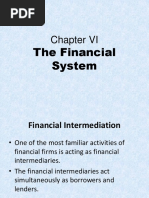Andersen Piterbarg Interest Rate Modeling Pdf Merge
- Posted in:Admin
- 07/05/18
- 34

The US dollar yield curve as of February 9, 2005. The curve has a typical upward sloping shape. In, the yield curve is a curve showing several yields or interest rates across different contract lengths (2 month, 2 year, 20 year, etc..) for a similar debt contract.
Financial services industry at that time to merge. Andersen, Vladimir V. Interest Rate Modeling in Three Volumes. La Cuestion Criminal Eugenio Zaffaroni Pdf Download ->->->->DOWNLOAD. Nonlinear dynamics and chaos steven h strogatz pdf download.
The curve shows the relation between the (level of the) (or cost of borrowing) and the time to, known as the ' term', of the debt for a given borrower in a given. For example, the interest rates paid on for various maturities are closely watched by many traders, and are commonly plotted on a graph such as the one on the right which is informally called 'the yield curve'. More formal mathematical descriptions of this relation are often called the. The shape of the yield curve indicates the cumulative priorities of all lenders relative to a particular borrower (such as the US Treasury or the Treasury of Japan), or the priorities of a single lender relative to all possible borrowers, with other factors held equal, lenders will prefer to have funds at their disposal, rather than at the disposal of a third party. The interest rate is the 'price' paid to convince them to lend, as the term of the loan increases, lenders demand an increase in the interest received. In addition, lenders may be concerned about future circumstances, e. 3d Maya Human Rigged Models Free Download. g. A potential default (or rising rates of inflation), so they demand higher interest rates on long-term loans than they demand on shorter-term loans to compensate for the increased risk.
Occasionally, when lenders are seeking long-term debt contracts more aggressively than short-term debt contracts, the yield curve 'inverts', with interest rates (yields) being lower for the longer periods of repayment so that lenders can attract long-term borrowing. The of a instrument is the overall rate of return available on the investment; in general the percentage per year that can be earned is dependent on the length of time that the money is invested. For example, a bank may offer a 'savings rate' higher than the normal checking account rate if the customer is prepared to leave money untouched for five years. Investing for a period of time t gives a yield Y( t). This Y is called the yield curve, and it is often, but not always, an increasing function of t. Yield curves are used by analysts, who analyze and related securities, to understand conditions in financial markets and to seek trading opportunities. Use the curves to understand economic conditions.
The yield curve function Y is actually only known with certainty for a few specific maturity dates, while the other maturities are calculated by ( see below). The British pound yield curve on February 9, 2005. This curve is unusual (inverted) in that long-term rates are lower than short-term ones. Yield curves are usually upward sloping: the longer the maturity, the higher the yield, with diminishing marginal increases (that is, as one moves to the right, the curve flattens out). There are two common explanations for upward sloping yield curves. First, it may be that the market is anticipating a rise in the. If investors hold off investing now, they may receive a better rate in the future.